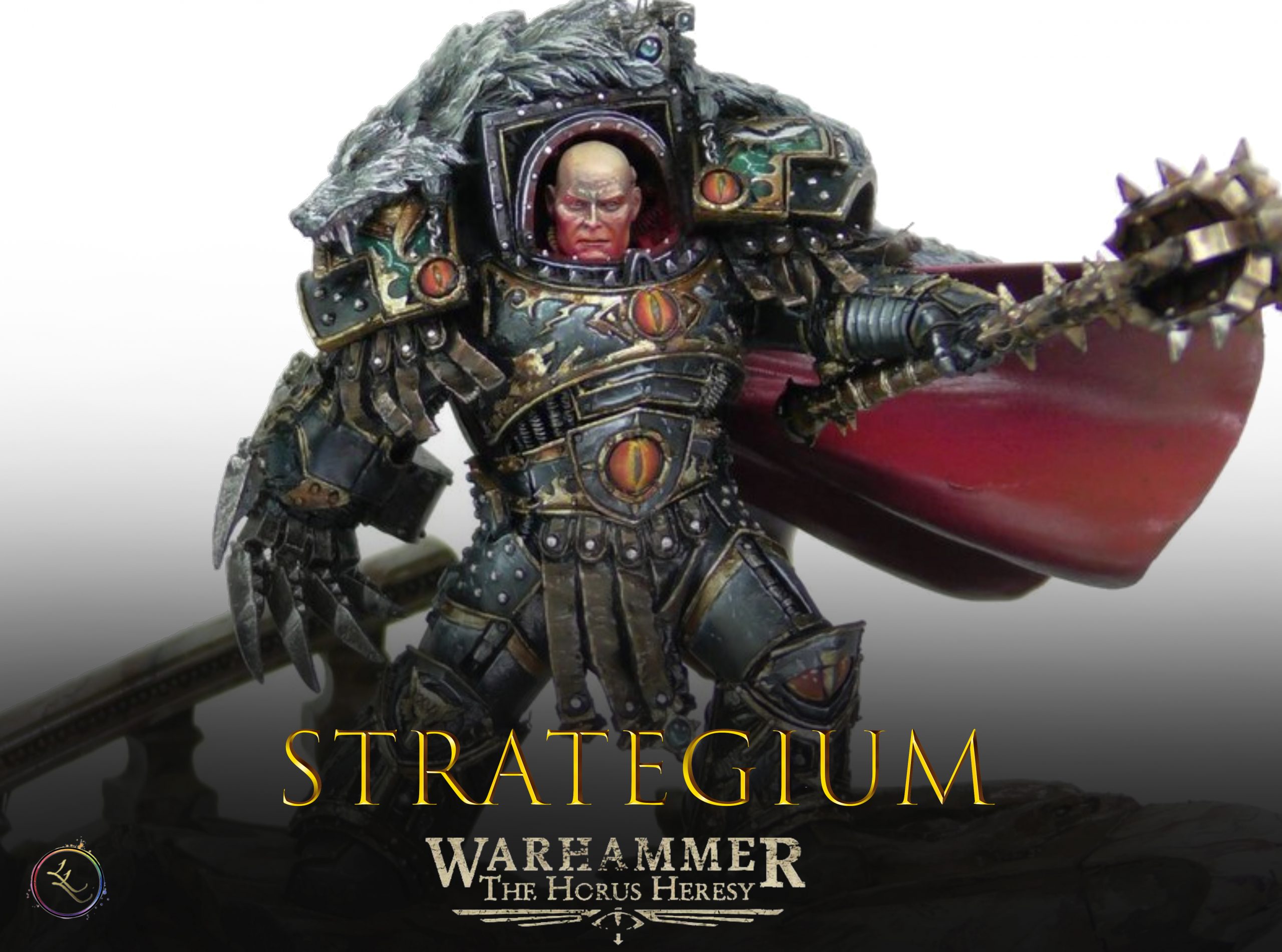
Reactions in Age of Darkness 2nd edition
`We do not need to be mighty when faced with weakness`.
Ezekyle Abaddon, The Solar War
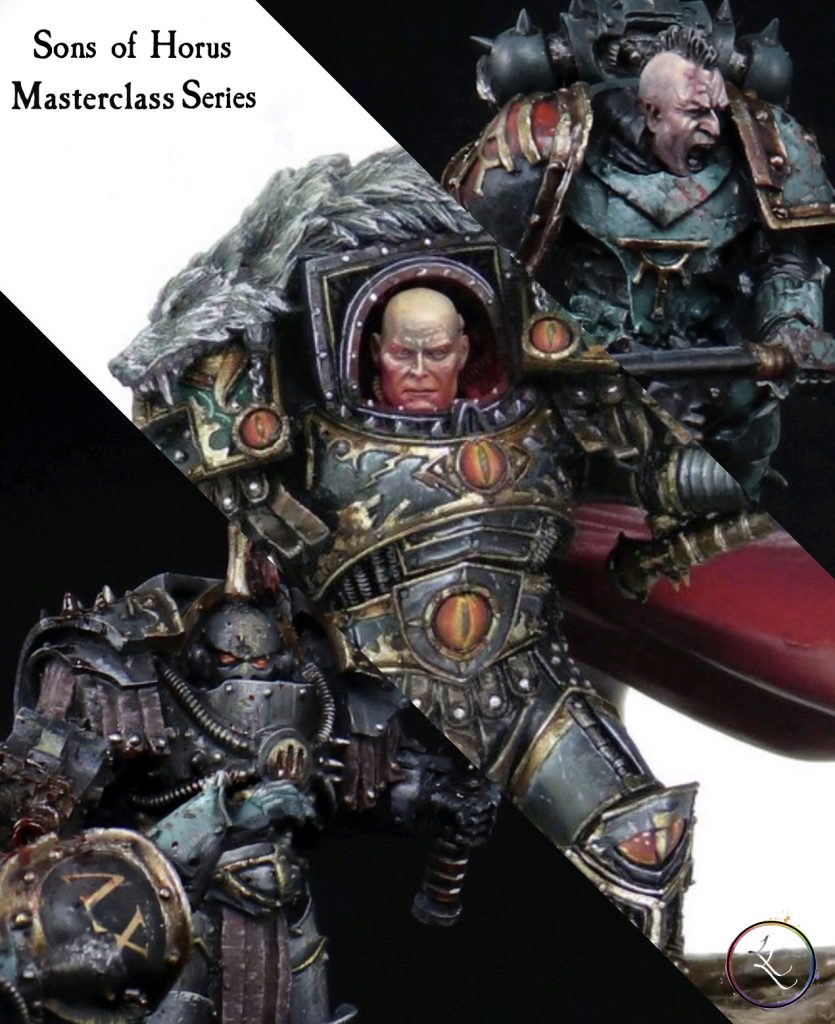
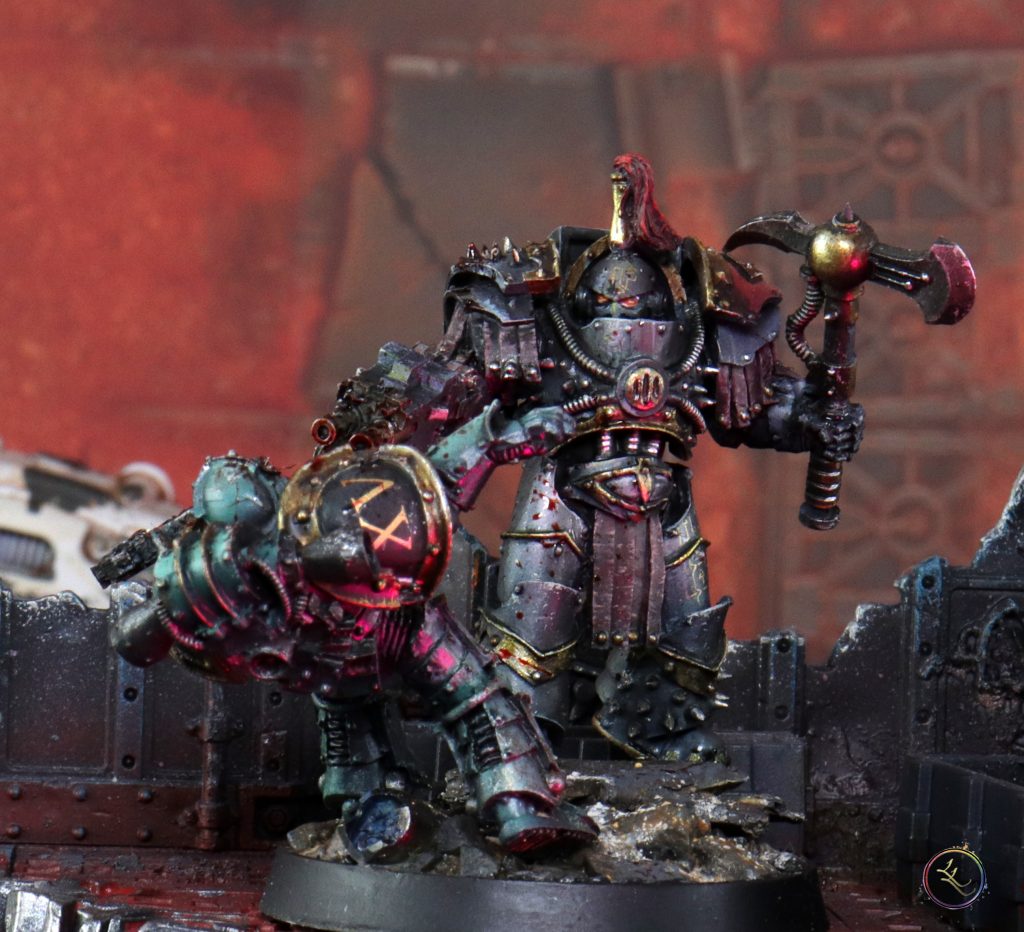
In this piece, we are going to explore some of the most exciting new elements of the new edition: Reactions.
One of the main complaints of several of the Games Workshop series of games – particularly from the 40k family of games – has been the amount of `downtime` during your opponent`s turn. All you seem to do is roll saving throws and remove your models. The role of Reactions is to involve you during this, previously, deadtime and to engage both players during all parts of the game. One player is the Active player – the person whose turn it is, and their opponent is known as the Reactive player.
Basics of Reactions
Firstly, we need to clarify what Reactions are not. For players of the current edition of 40k, Reactions are not stratagems that dramatically change how units function or act. Nor are Reactions like the stratagems in Adeptus Titanicus where you have only a specific type of stratagems that are pre-selected at the start of the game to a fixed value.
In essence, Reactions in Horus Heresy are more like charge reactions in old versions of Warhammer Fantasy Battles, where your units could act with a limited number of choices when the enemy does something – normally charging your units.
There are six core Reactions that can be made during the game – two in each phase (Movement, Shooting, Assault). Alongside this are more Advanced Reactions such as Interceptor which can only be used in certain situations, or with appropriate wargear, or alongside certain armies – each Astartes Legion has its own unique Advanced Reaction for example.
Sign up to our Youtube channel to keep up to date with vlogs, live streams and showcases!
Limitations
But how do we ensure that Reactions do not get out of hand and units are reacting to everything that the enemy does; slowing down the game and creating a negative game experience?
The key method here is by the limitations of Reactions. A standard army can only react once per phase – each Reaction can only be used by a single unit. For example, a unit of Blood Angels moves up to charge distance in their Active movement phase; the Reactive player can choose a single unit that is near the Blood Angel unit to react during the same phase – they then have no more Reactions that phase.
As is usual with the family of Games Workshop games, some rules can modify the number of Reactions. For example, a Warlord Trait may give an extra reaction in the movement phase, or a piece of wargear allows a free reaction during the shooting phase.
However, regardless of these additional rules, a Reactive player may not have more than three Reactions per phase. This means that a Reactive player must hoard these precious Reactions carefully. Utilising them when needed and a canny opponent will draw them out before launching their main strike.
In a similar manner, certain conditions such as pinning and being broken, prevent a unit from Reacting. Break out those sniper weapons – they now have more utility than causing wounds!
The second part of this article will focus on the specific core Reactions, phase by phase.
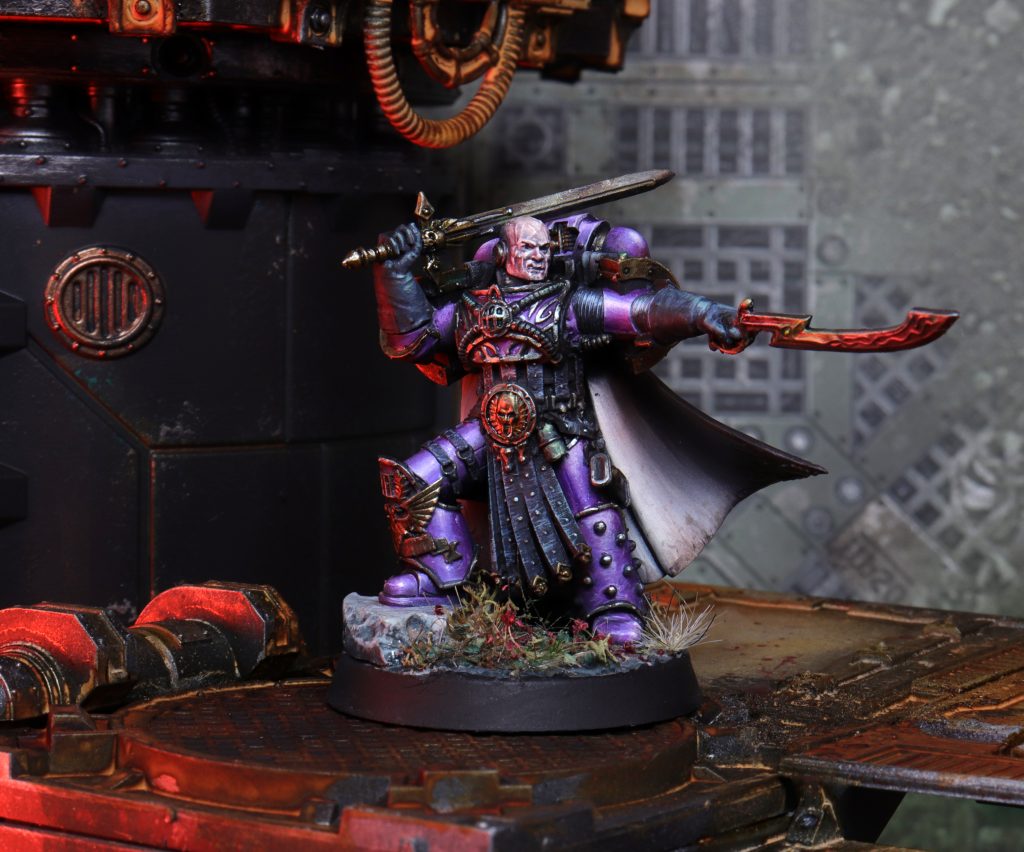
Part 2 – Core Reactions
`Perfection is achieved, not when there is nothing more to add, but when there is nothing left to take away.`
Ostian Delafour, Fulgrim
Movement Reactions
Both Core movement Reactions can only activate under certain circumstances. The Reactive player can use the Movement Phase reactions if an Active players unit moves within 12” of a Reactive players unit that has full line of sight to the Active unit. The reaction must also be made immediately and cannot be returned to later; this allows the Active player to bait traps or forces his opponent into tough choices.
Advance – This allows a reacting unit to move directly forward towards the unit that trigged the reaction up to their Initiative characteristic. Vehicles can pivot up to 90° before moving 6” directly forward.
The downside of this is that you always have to move by the shortest route so moving through dangerous terrain can be an issue or can move you out of cover so be aware of potential problems. However, this may allow you to block transport vehicles’ access points, or to shield friendly units from possible charges so could be key at the right time.
Withdraw – Functionally the opposite of Advance, with the reacting unit moving directly away from the unit that triggered the reaction up to their Initiative characteristic. Vehicles move in the same manner as Advance.
Once again, you need to consider what you may be Withdrawing into with types of terrain. However, you can increase potential charge distances or create a firing lane for friendly units in your next turn.
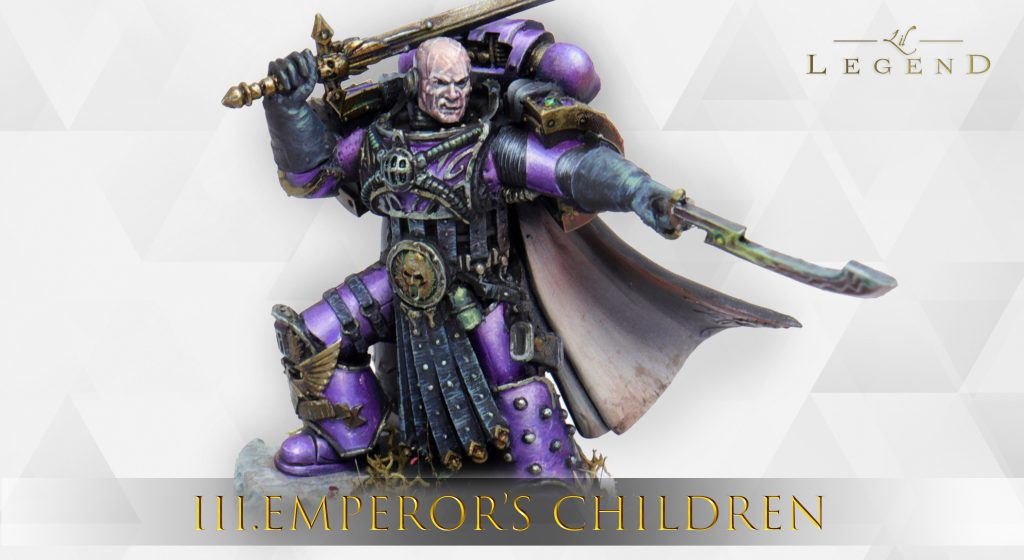
Shooting phase
During this phase, Reacting units may only use Core Reactions once shot upon – you cannot use these without having a unit being triggered first. In all cases, the Active Player must complete their `To Hit` and `To Wound` rolls and the Reactive player must roll any Armour Saves first. The reaction activates before Damage Mitigation rolls are made or casualties removed.
Please note that, unlike the Movement phase Reactions, there is no range limit on these Reactions in the Shooting phase. If you are shot at, then you can react!
Return Fire – the choice for the more aggressive player. The Reactive players unit that has been triggered may shoot back – but the target can only be the unit that shot them initially! Be careful with shooting those heavy weapon squads now.
The Reactive players unit follows all the usual rules for shooting with all models counting as stationary – this allows heavy weapons to still shoot. However, weapons must be shot directly and in line of sight (no indirect shots – looking at you Thudd Guns) and vehicles can only shoot with defensive weapons – now characterised as weapons with S6 or less. Template weapons can only be used within 8” and must use the Wall of Death special rule.
This is perhaps one of the more straightforward Reactions and will be heavily used by those dangerous alpha strike units such as plasma weapon support squads or by units that are in danger of being wiped out – heavy weapon squads targeted by enemy vehicles for example.
Evade – If Return Fire is intended to decimate enemy units that dared to fire upon you, then Evade is intended to keep your units alive from dangerous enemy fire.
This reaction allows the Reacting unit to gain a 5+ Shrouded save. This is now a Damage Mitigation roll that allows you to try to save models that have failed armour saves. A roll of 5+ will prevent that model from taking a wound. Units that already have a Shrouded save do not improve it further but can choose which version of Shrouded they may use if one is better. Vehicles that are immobilised, or units with a Movement characteristic of 0, may not use this reaction.
With cover saves reduced in the new edition of Horus Heresy, Evade is a useful reaction for keeping units alive that may not have an armour save or just suffered a large number of unexpected casualties – remember Reactions occur after armour saves have been resolved but before Damage Mitigation rolls.
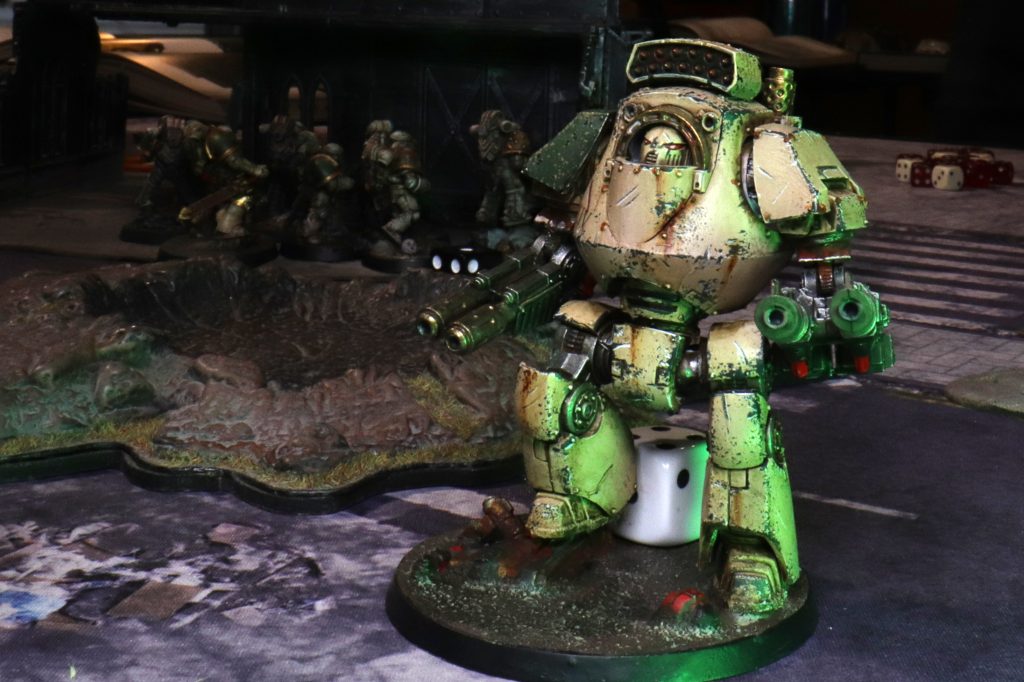
Assault Phase
The Reactive player may declare one of the two core assault phase Reactions once an Active players unit has made their Charge Roll but before the models are moved as part of the Charge or Surge move. However, remember that these are conducted unit by unit so once you have passed the opportunity for a reaction, you cannot go back and re-take that opportunity.
Overwatch – this is one of the biggest changes to the new edition in that overwatch is no longer an automatic action. Now the Reactive player must choose when to use Overwatch, and in most cases, can only be used once per phase. In many ways, this reaction is similar to Return Fire and has the same limitations and core rules with the key difference that it can only be made against the unit that has charged the reacting unit. The Active players unit may not make cover saves against any damage caused.
Overwatch has been a core part of the 40k family of games since 3rd edition so needs no further explanation how important this is for stopping or limiting the damage that charging units can cause. However, now its use must be carefully marshalled for the `right` charge against the `right` unit as it has improved dramatically allowing all heavy weapons and lighter weapons to shot at full potential but only against a single charging unit per turn.
Hold the Line – a new Reaction in the assault phase that works differently to all other Reactions. The Reacting unit must make a Morale check. If that is successful, the charging unit counts as Disordered, preventing them from gaining bonus attacks. A nice bonus is that this counts against all further charges that turn. However, if you fail the Morale check then the reacting unit gains no bonuses and you have wasted a precious Reaction point that phase!
Against certain units that gain benefits on the charge such as the Rage rule, then Hold the Line could be devastating by removing the bonuses that the charging unit needs to win the assault. Hold the Line also helps remove some of the advantages when faced by a unit of equal ability (two tactical squads for example) and allows the reacting unit to perhaps hold for an additional precious turn of the game.
Final thoughts
Reactions have the potential to have a huge impact at key points in the game – the `cinematic moments` that we all love to see. By limiting the number, a player can use, the Reactive player has to carefully decide when and where to use them. An Active player knowing this can bait and trap enemy forces into using Reactions where they are less impactful.
Some units will now have the chance to `do something` before being removed from the game allowing a wider army selection of units and Reactions also go some way to limiting the use of `Deathstar` units as Reactions can be used to reduce their effectiveness. Against a more thematic army of balanced units, Reactive players will find it more of a challenge where and when to use their Reactions.
This article has only covered the Core Reactions available to all armies. Future articles will include Advanced and Army-specific Reactions.
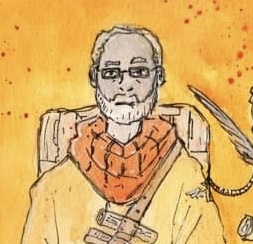
Darren has had a strong interest in the Sons of Horus, and the Heresy, since first reading the Bill King short story in the ‘Lost and the Damned – Realm of Chaos’ tome at an impressionable age.You can find Darren on the Age of Darkness Podcast & On Twitter!

Reactions in Age of Darkness 2nd edition Reactions in Age of Darkness 2nd edition Reactions in Age of Darkness 2nd edition Reactions in Age of Darkness 2nd edition


